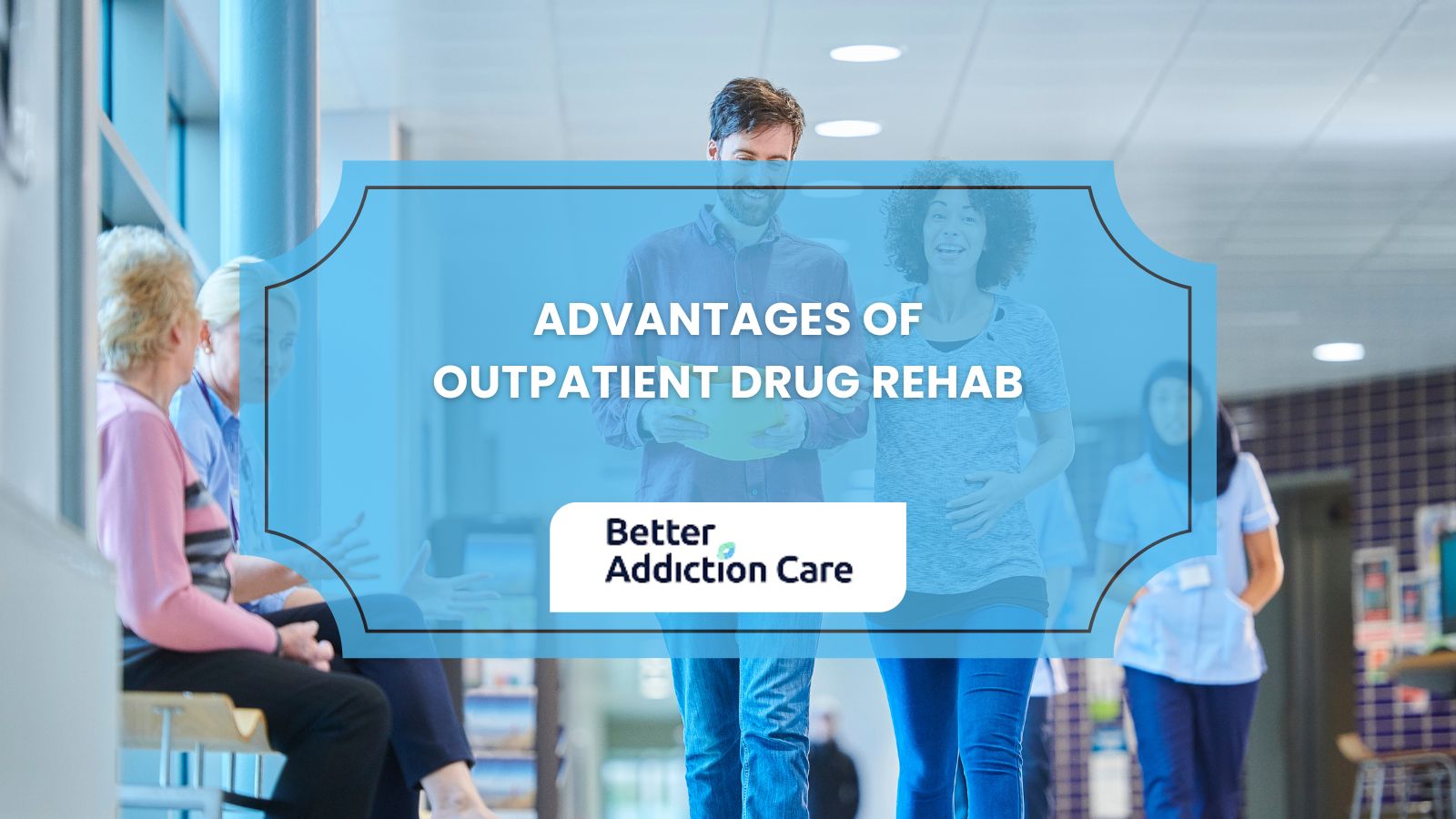Differences Between Inpatient and Outpatient Addiction Treatment
To discover the best approach to recovering from addiction, individuals should decide on what the treatment would be. Some alternatives are inpatient and outpatient addiction treatments. The problem lies in understanding how these treatment methods differ.

The current article compares inpatient and outpatient addiction treatment. We want to provide a helpful tool to help people fight their addiction by examining their different settings, levels of care, therapeutic approaches, and support networks. Here, we offer a guide to those looking for basic information about these types of programs so they can feel confident when making the decision to initiate addiction treatment.
What is the Main Difference Between Inpatient and Outpatient Treatment?
The main difference between inpatient and outpatient treatment is, for sure, the location where the treatment is provided.
For instance, in inpatient treatment, patients stay at a treatment center throughout their program and are provided with help and supervision round the clock, seven days a week. This intensive environment is of a structured and controlled nature, which is ideal for recovery, especially from severe addictions. This type of treatment is suitable for those who are seriously addicted and need intensive treatment.
On the other hand, outpatient treatment allows people to live in their homes while they continue to attend therapy and treatment classes at the facility as scheduled. Outpatient programs are flexible and enable individuals to continue their daily activities, but the level of close monitoring and intensive care is less than that of inpatient treatment. Outpatient treatment is very effective; however, this assessment is usually more accurate when talking about individuals with light or mild addiction or those who need aftercare.
What is The Level of Care of Outpatient and Inpatient Treatment?
When comparing ASAM’s five levels of care, inpatient treatment is level 3 and level 4, and outpatient treatment is level 1 and level 2. This means that the intensities of inpatient and outpatient drug treatment are absolutely different. Thus, the intensity of the therapy corresponds to the power of the addiction. Overall, it can be said that inpatient drug treatment usually provides more intensive care than outpatient programs.
Inpatient treatment involves staying at the treatment center throughout the program, 24 hours a day, seven days a week. This context offers a well-ordered and controlled space, which is advantageous for healing. Inpatient programs employ various therapy methods, including individual counseling, group therapy, family therapy, and non-traditional therapies such as yoga and art therapy.
Detoxification services provided under the watch of a physician to help people control withdrawal symptoms safely may also be part of the inpatient programs. Patients with severe addiction or dual-diagnosis mental health issues may benefit significantly from inpatient treatment as they are under 24-hour supervision and receive both medical and therapeutic care.
On the contrary, outpatient drug treatment provides a variety of levels of care that depend upon the person's needs and the way the program is structured, making it more personalized. Outpatient programs allow patients to live at home but participate in the treatment program at the center. Some methods available in the outpatient setting are quite similar to those available in an inpatient setting, such as family therapy and holistic treatments; however, they are rather short-term and less rigorous.
Outpatient treatments allow the patients more freedom while continuing their normal activities. The quality of care is the second tier in these programs compared to inpatient treatment. Therapy meetings in outpatient programs can take a few hours per week.
Treatment Approaches and Network Support in Inpatient vs. Outpatient
The treatment interventions and support systems are different in inpatient and outpatient addiction treatment programs.
Inpatient Treatment:
1. Treatment Approaches:
The inpatient addiction treatment program offers a full range of therapeutic modalities. Therapies often used are individual counseling, group therapy, family therapy, cognitive behavioral therapy, dialectical behavioral therapy, and some holistic methods such as yoga, meditation, or art therapy. Inpatient programs include evidence-based practices that are well-designed to address the physical, psychological, and emotional aspects of addiction. Moreover, inpatient care may incorporate detox services aimed at safely controlling withdrawal symptoms.
2. Support Network:
Inpatient treatment generates an accommodating community atmosphere where individuals live in the treatment facility for the duration of the program. This closely bonded community offers peer support, motivation, and responsibility. Patients in inpatient programs have 24-hour access to medical and therapeutic support, enabling them to handle problems and failures with the help of professionals and peers. Once the inpatient treatment is over, the patients can transition to outpatient care or step-down programs, where they will still receive support as they become part of the community.
Outpatient Treatment:
1. Treatment Approaches:
A range of therapeutic interventions are provided with outpatient addiction treatment, though the frequency and intensity may vary according to the patient's needs and the nature of the program. Individual counseling, group therapy, family therapy, cognitive-behavioral therapy, motivational interviewing, and relapse prevention are some therapies used in outpatient programs. The outpatient programs are more flexible in timing the therapy sessions so that the patients can go on with work, school, or other family obligations. In that way, outpatient treatment has a lower number of hours of treatment compared to inpatient programs, but it still addresses the issues that caused addiction and allows people to learn how to continue being sober.
2. Support Network:
Outpatient treatment involves individuals residing at home and attending onsite scheduled therapy sessions and treatment programs. Even though outpatient programs do not provide continuous supervision, unlike inpatient care, they focus on developing a support network and applying aftercare plans to improve long-term recovery success. Patients in outpatient programs can have their family's daily support. They can also attend groups like AA or NA meetings and relapse prevention programs to prevent them from drinking or using drugs and to develop new ways of coping with any challenges that may arise after treatment.
In general, inpatient and outpatient addiction treatment programs apply different approaches to helping recovering addicts but differ in the setting and care intensity provided, as well as the support system used. The choice between inpatient and outpatient treatment is determined by such factors as the severity of the addiction, individual needs and preferences, and the amount of support available in the person’s environment.
Differences in Cost Between Inpatient and Outpatient Treatment
Cost differences between inpatient and outpatient addiction treatment can vary significantly based on several factors:
Inpatient Treatment:
1. Residential Facility Costs:
Inpatient treatment means staying at a treatment facility for the whole program, which usually costs more because of the accommodation prices.
2. Medical and Therapeutic Services:
Inpatient programs offer medical and therapeutic services 24 hours a day, including physician visits, counseling sessions, and medication management. These services substantially contribute to the total cost of inpatient care.
3. Amenities and Services:
Some luxury or executive inpatient centers provide luxury items and extra facilities, including private rooms, gourmet meals, activities, and optional therapies, which can dramatically bump up the cost of treatment.
Outpatient Treatment:
1. Therapy Session Fees:
Outpatient treatment usually includes attending planned therapy sessions and programs at the facility, billed per session. The price of the outpatient therapy sessions differs, determined by the length and type of therapy provided.
2. Medication Management:
Some of the outpatient programs may cover medication management services for people who are taking medication-assisted treatment (MAT) for addiction. The cost of drugs and physician consultations may also impact the price of the outpatient treatment as a whole.
3. Program Structure:
Outpatient programs differ in structure and level of care ranging from typical outpatient programs up to IOP (intensive outpatient programs). The cost of outpatient treatment depends on the level of care and the number of therapy sessions needed.
Factors Influencing Cost:
1. Location:
Treatment cost also largely depends on the institution's location. As a rule, treatment centers in urban areas or areas with high standards of living may demand higher treatment fees.
2. Duration of Treatment:
Treatment time mostly affects the total cost. Prolonged treatment durations will lead to high total costs.
3. Insurance Coverage:
Most insurance plans provide coverage for addiction treatment, including inpatient and outpatient programs. The scope of coverage, deductibles, copayments, and out-of-pocket payments will determine the sum of money an individual will be required to pay.
To sum up, inpatient treatment has high initial costs arising from room and board and continuous care, but the costs incurred by outpatients might be lower per session when they add up to the total. People who are seeking addiction treatment should critically review their financial status, insurance coverage, treatment needs, and available resources to make rational decisions about the best option for their recovery process.
Related Articles
Treatment Centers in New Jersey








